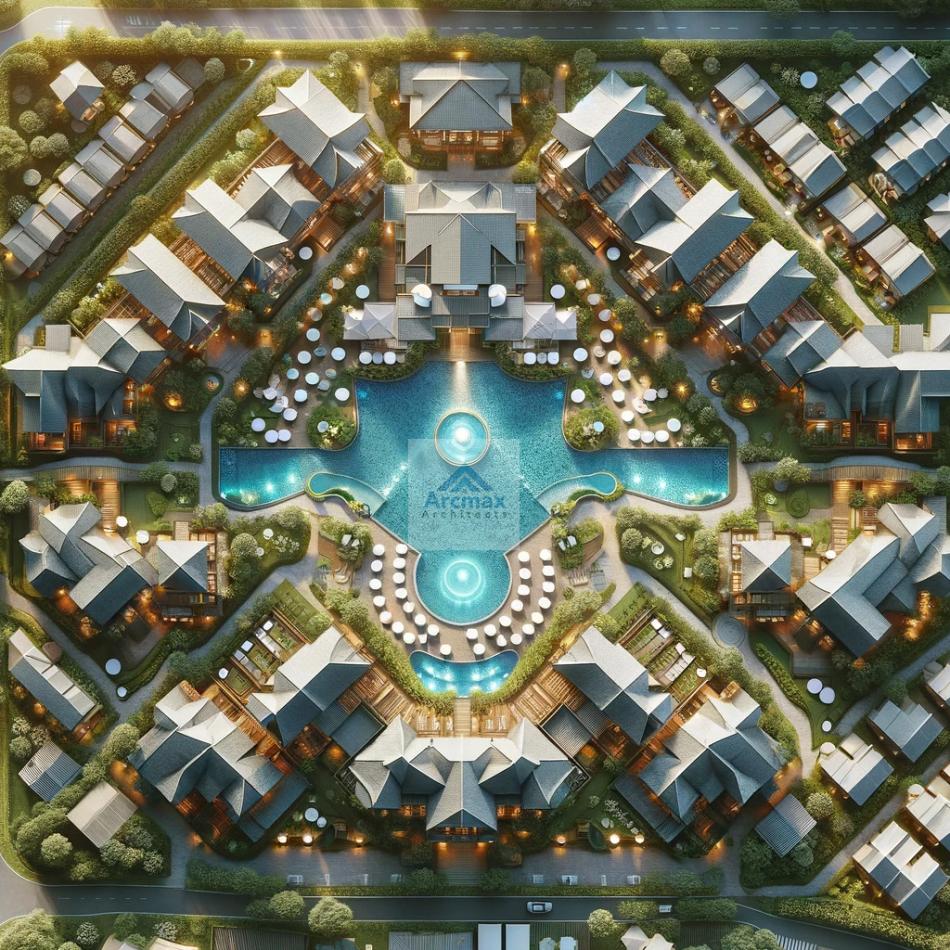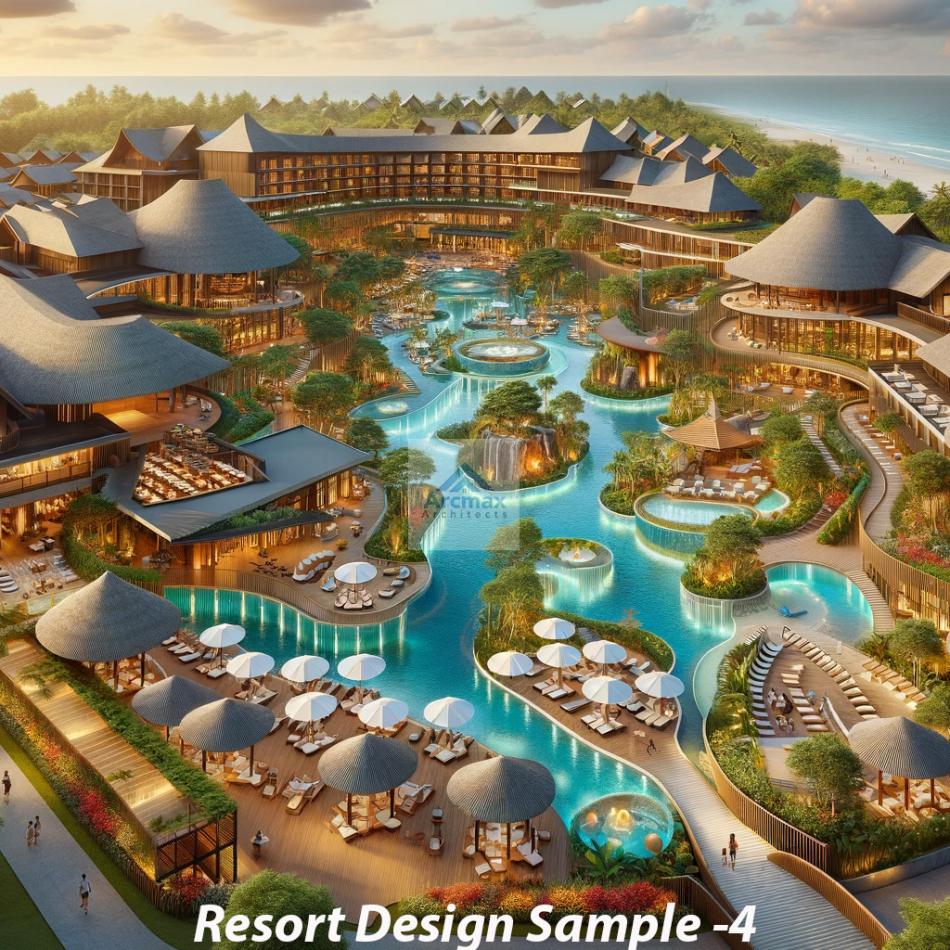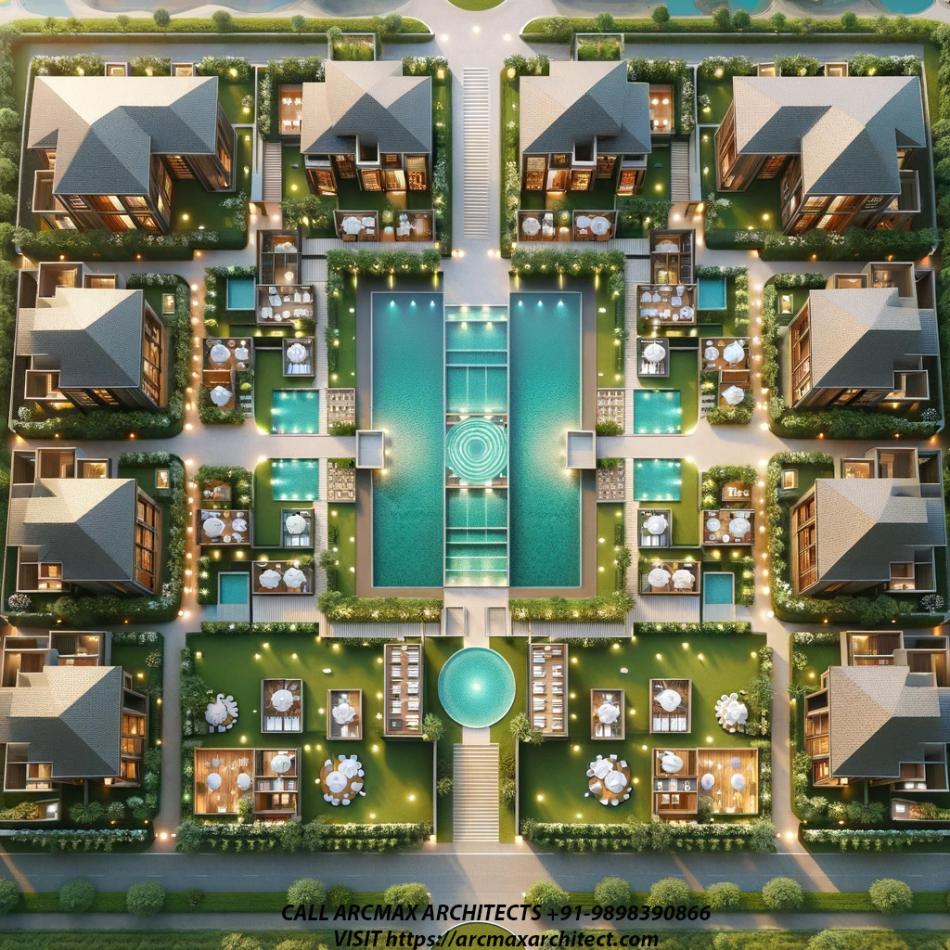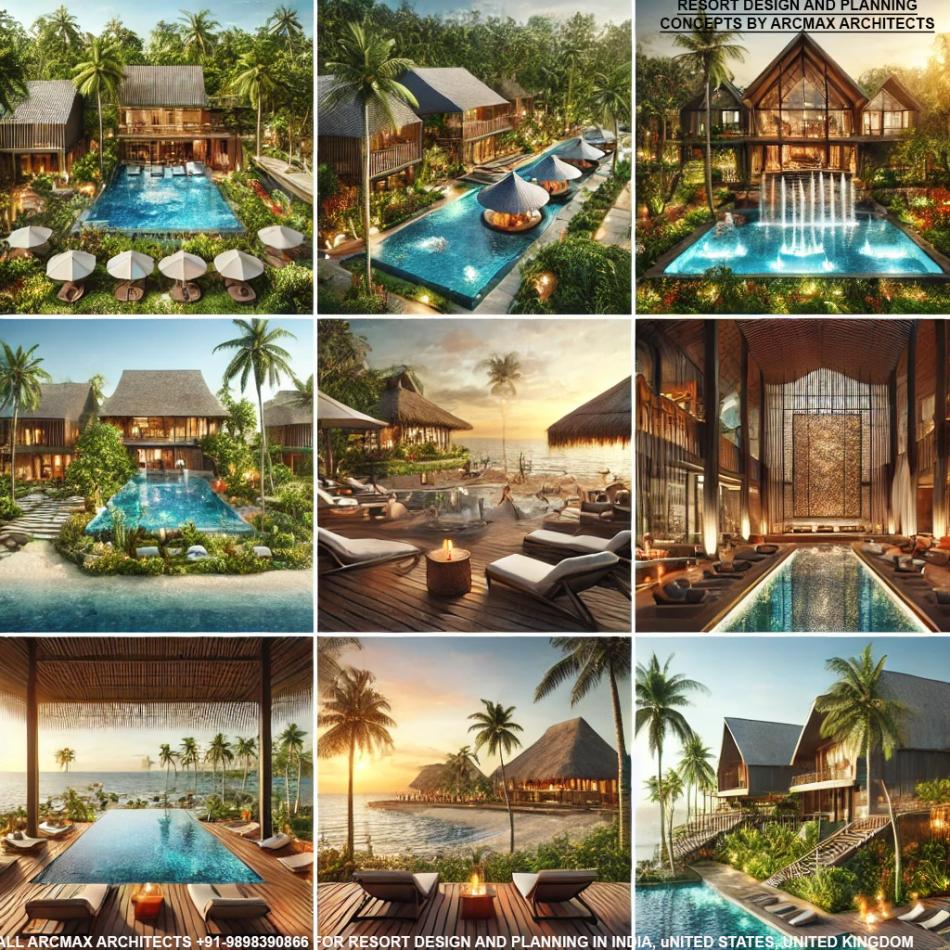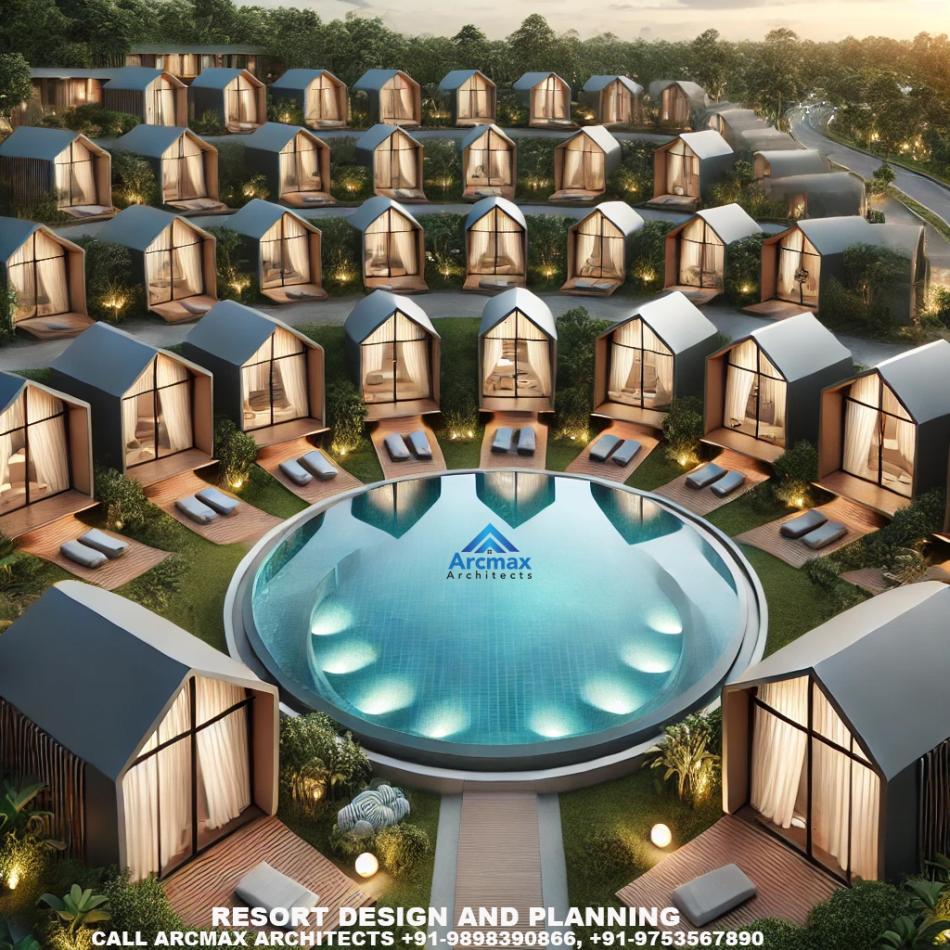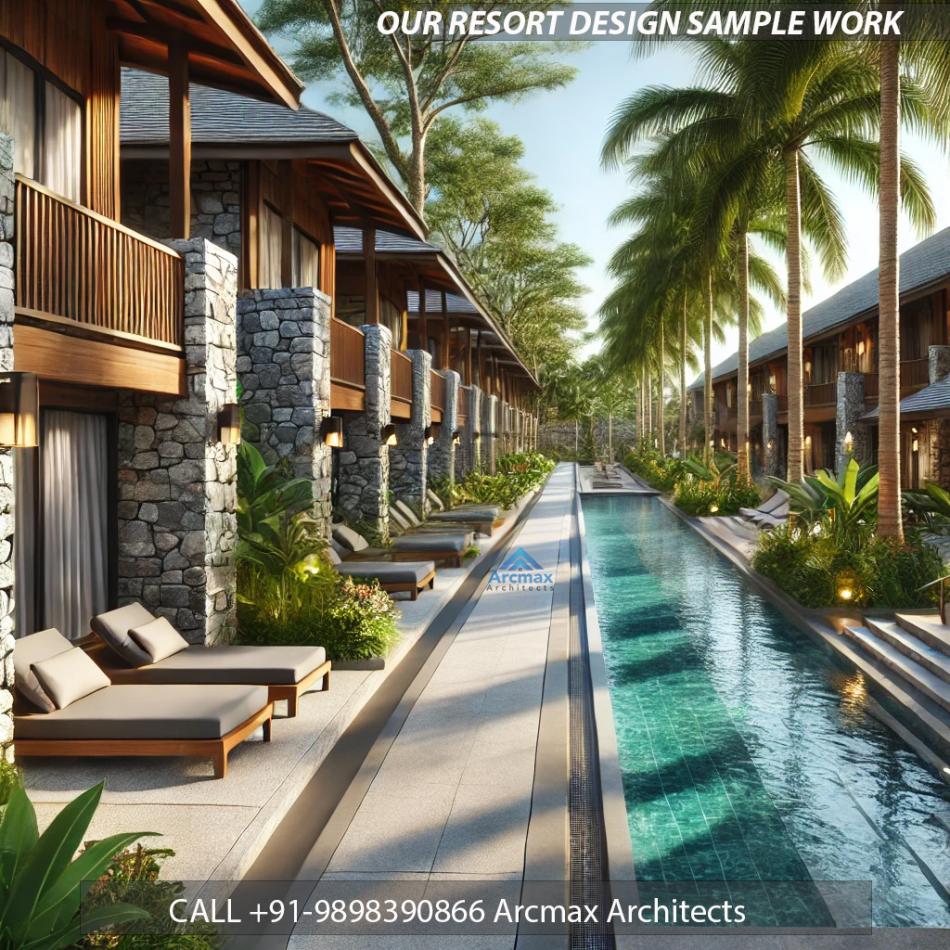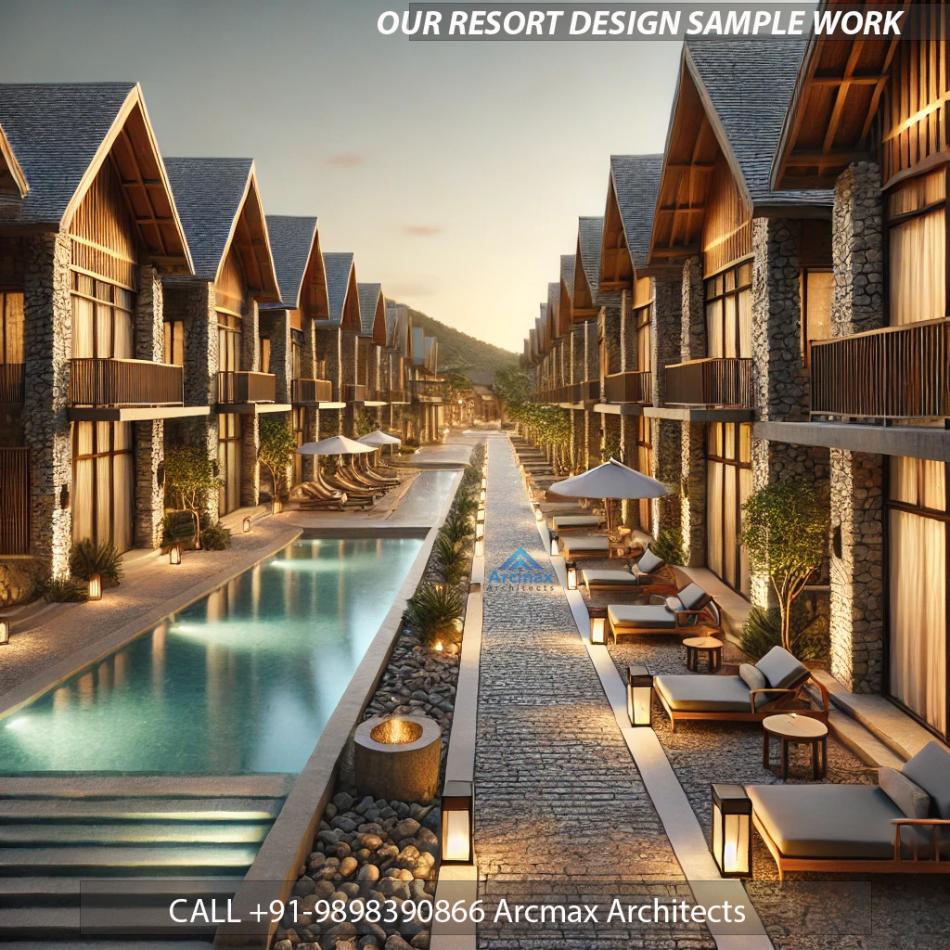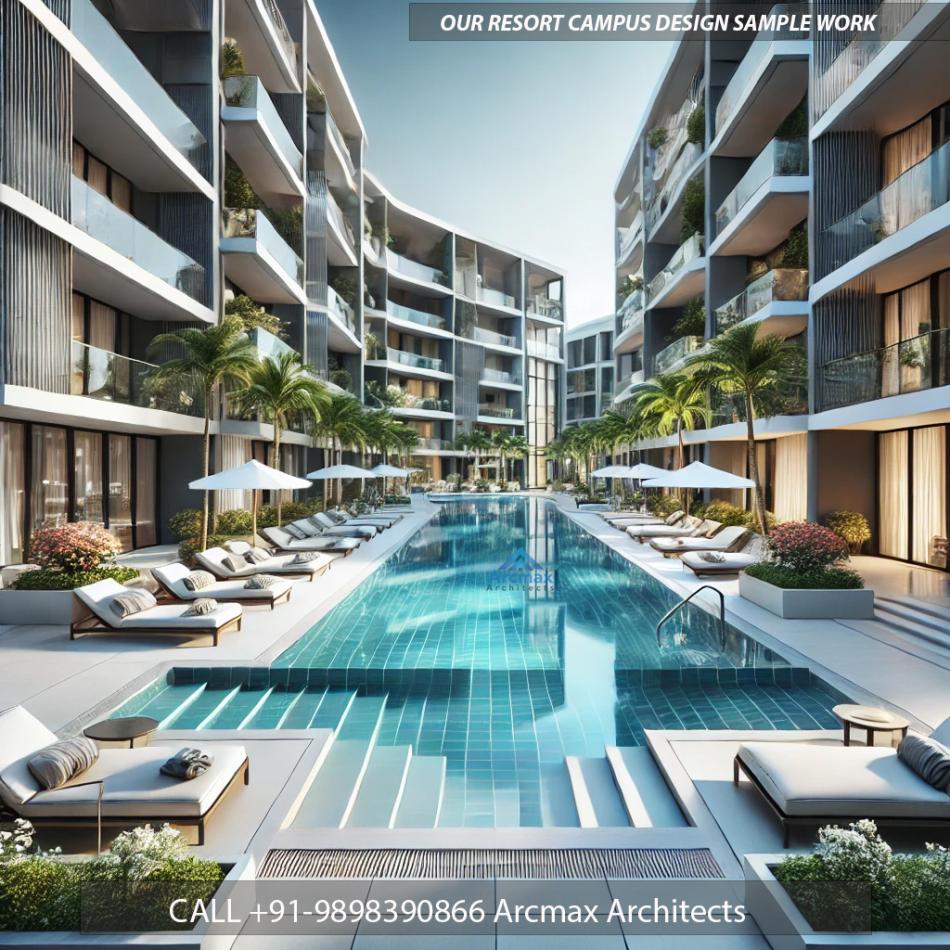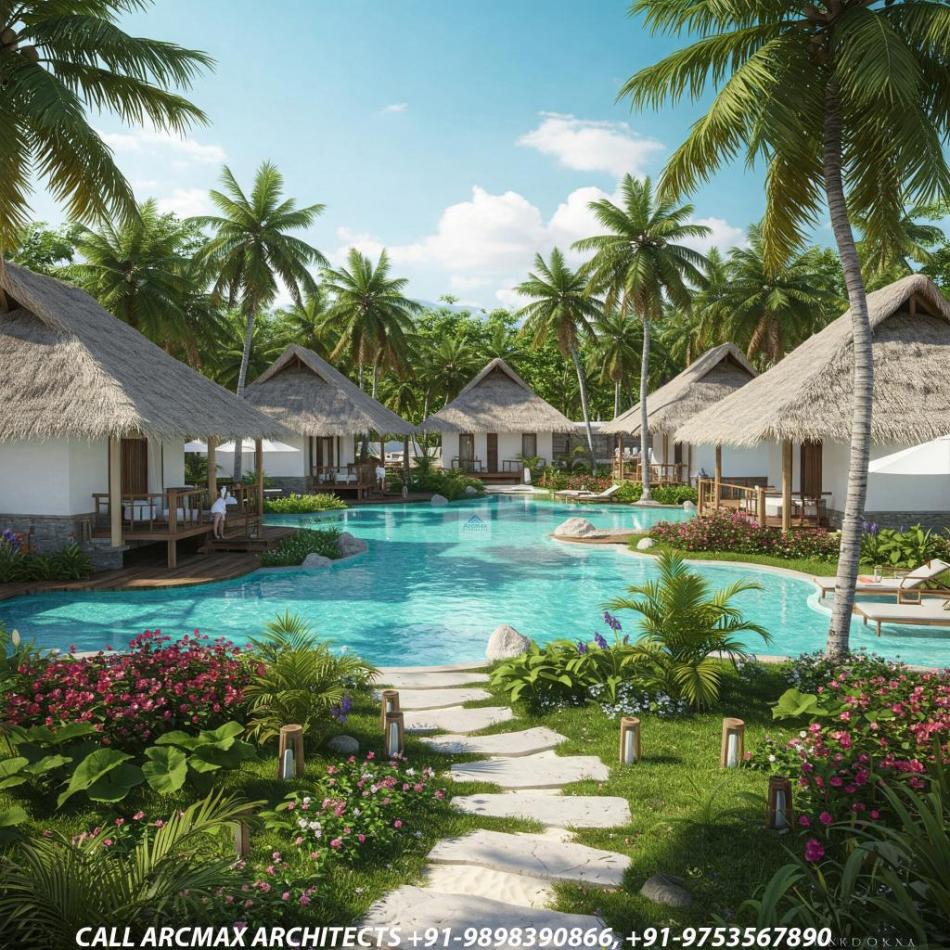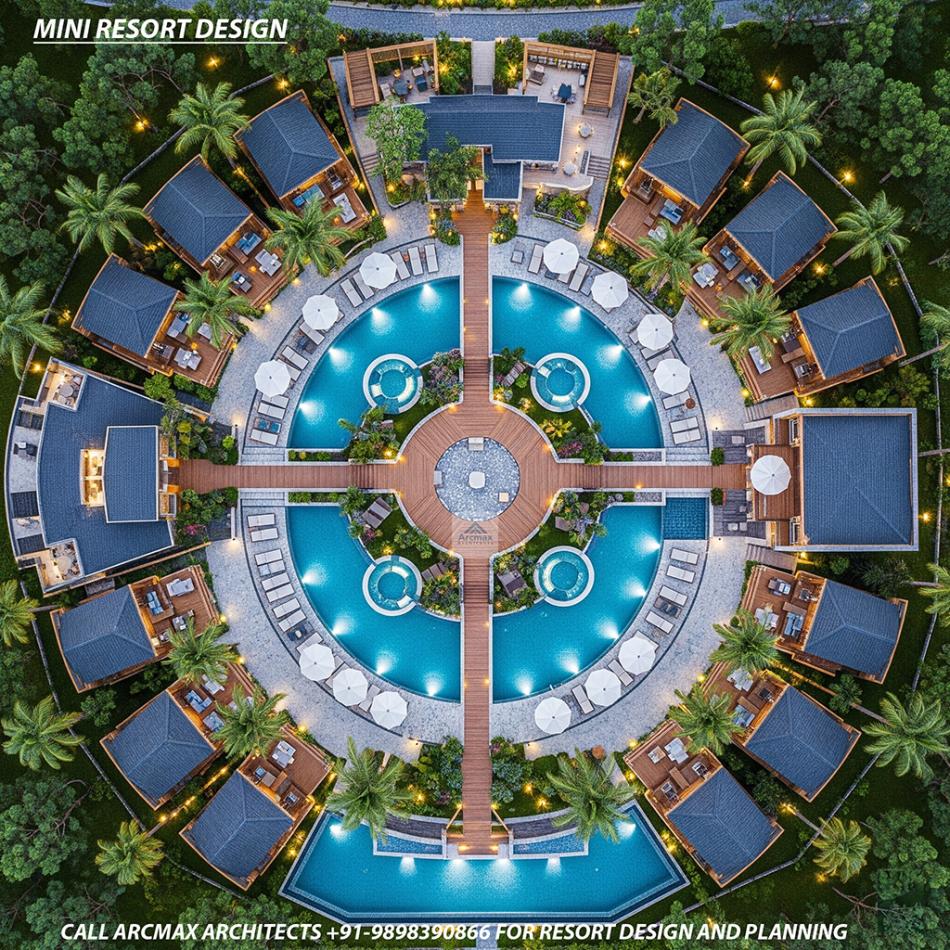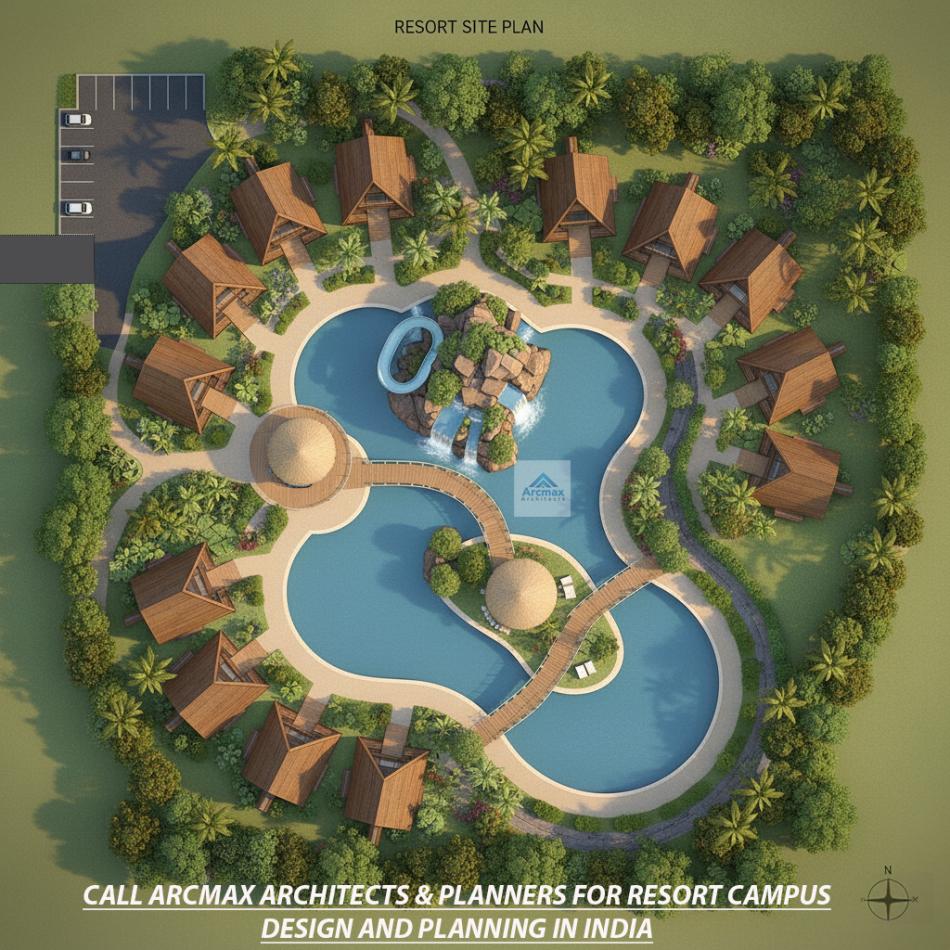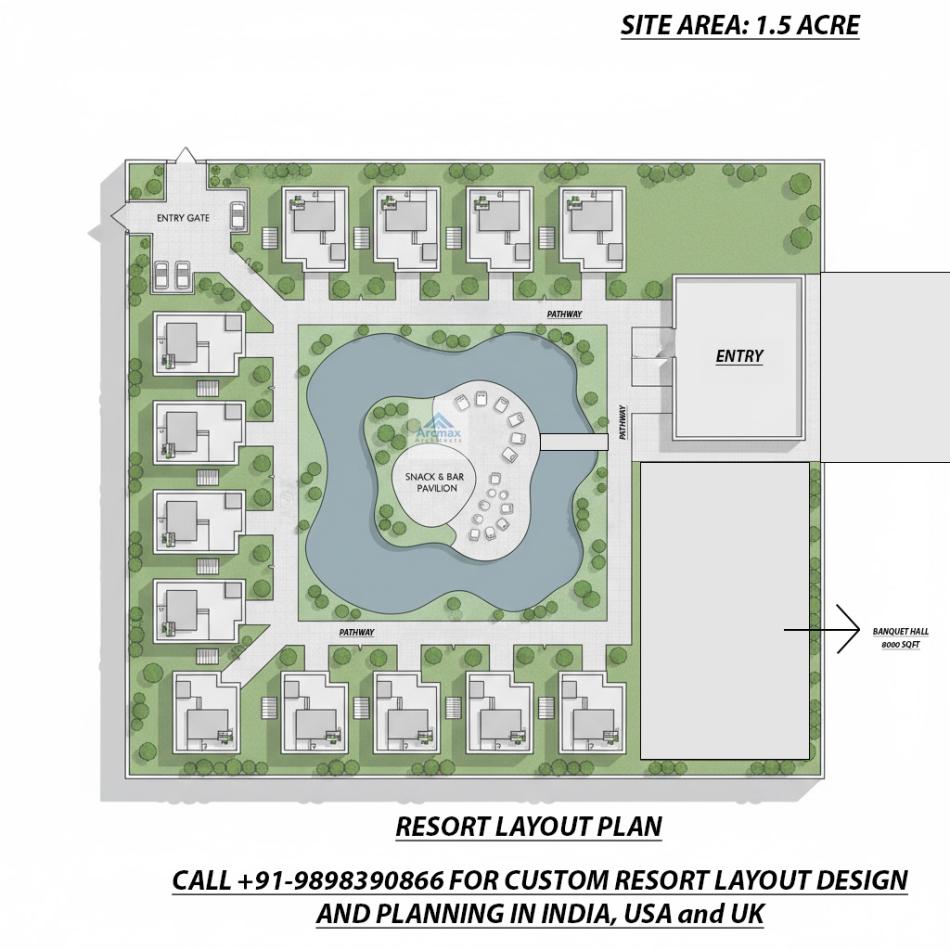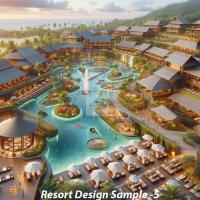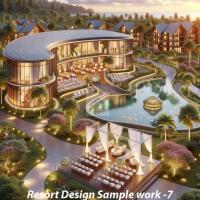Bakeri City, Pincode: 380015 Ahmedabad, Gujarat, India,
244 Madison Avenue, New York, United States
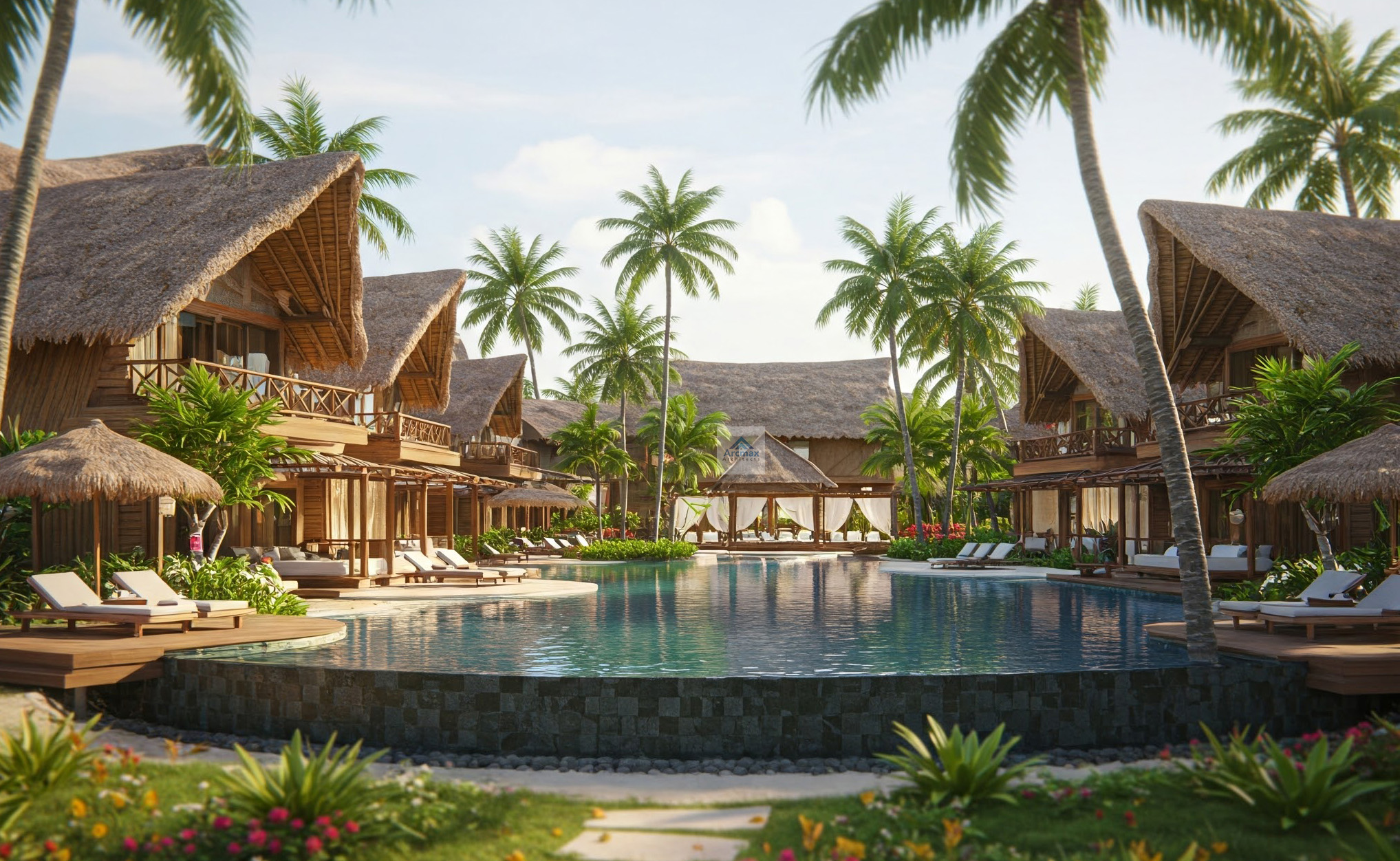
Our Client






Waterfront and Beachfront Development
Waterfront and Beachfront Development: Design Guidelines and Principles- By Arcmax Architects, call +91-9898390866
Waterfront and beachfront development encompasses a unique blend of opportunities and challenges, aiming to create spaces that are both captivating and harmonious with their delicate ecosystems. These developments, whether for recreational, residential, commercial, or mixed-use purposes, require a thoughtful approach to design and planning. The objective is to enhance the natural beauty and accessibility of waterfront locations while minimizing environmental impact and ensuring sustainability. Here, we outline essential elements, general design guidelines, and principles for successful waterfront and beachfront development.
Core Principles for Waterfront and Beachfront Development:
Sustainability and Environmental Protection: Prioritize sustainable practices that preserve water quality, coastal biodiversity, and natural landscapes. Developments should incorporate eco-friendly materials, renewable energy sources, and water-efficient technologies.
Resilience and Adaptation: With climate change posing increasing risks to coastal areas, developments must incorporate resilient design strategies to withstand storms, flooding, and erosion, as well as sea-level rise.
Accessibility and Public Access: Ensure equitable access to waterfronts and beaches for all, including the creation of public spaces that encourage community interaction and recreational activities.
Cultural and Historical Preservation: Respect and integrate the cultural, historical, and archaeological significance of the waterfront area into the development, celebrating local heritage.
Mixed-Use Development: Encourage mixed-use developments that combine residential, commercial, and recreational spaces to create vibrant, active waterfront communities.
Visual and Aesthetic Considerations: Design with sensitivity to the visual impacts, ensuring that developments enhance the scenic quality of the waterfront and complement the surrounding landscape.
Essential Elements in Design and Planning
Integrated Landscaping: Use native vegetation and green infrastructure to enhance biodiversity, manage stormwater, and integrate the development naturally with its surroundings.
Water-Edge Interface: Design the interface between land and water to protect against erosion, enhance aquatic habitats, and provide recreational access. Techniques may include living shorelines, seawalls, and boardwalks.
Public Spaces and Amenities: Incorporate parks, promenades, piers, and other public spaces that offer leisure and recreational opportunities, fostering a connection between people and the water.
Adaptive Infrastructure: Implement infrastructure that can adapt to changing environmental conditions, including elevated walkways, flexible building foundations, and permeable surfaces for effective water management.
Environmental Impact Assessment: Conduct thorough environmental impact assessments to guide the development process, ensuring minimal harm to ecosystems and compliance with regulations.
General Design Guidelines
Minimize Footprint: Limit the physical footprint of development to preserve natural habitats and reduce environmental impact.
Buffer Zones: Establish buffer zones between developments and the water to protect shorelines and provide habitats for wildlife.
Stormwater Management: Utilize sustainable stormwater management systems, such as rain gardens, bioswales, and green roofs, to reduce runoff and pollution.
Energy Efficiency: Design buildings and structures to be energy-efficient, taking advantage of natural lighting, ventilation, and renewable energy sources.
Material Selection: Choose materials that are durable, low maintenance, and have minimal environmental impact, especially those that can withstand the corrosive marine environment.
Community Engagement: Engage with local communities in the planning process to ensure the development meets their needs and respects local values and traditions.
Waterfront and beachfront development offers a unique opportunity to create spaces that connect people with the natural beauty of coastal environments. By adhering to principles of sustainability, resilience, accessibility, and cultural preservation, developers can design projects that not only enhance the attractiveness and utility of these areas but also protect and sustain them for future generations. Through careful planning and design, waterfront and beachfront developments can achieve a balance between development and nature, creating lasting value for communities and the environment alike.
Want a Quotation please fill the form
- Resort Master Planning
- Hospitality Design
- Resort Landscape Architecture
- Environmental and Sustainable Design
- Cultural and Thematic Resort Design
- Restaurant and Retail Design
- Waterfront and Beachfront Development
- Luxury and Exclusive Resorts
- Eco-Resorts and Retreats
- Adventure and Sports Resorts
- Heritage and Restoration Projects
- Resort Architecture Design


